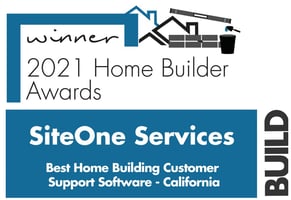Keeping Homeowners Excited: The Key to Mitigating Risks and Avoiding Litigation
 As builders, we aim to construct houses and craft dreams that turn into cherished homes. The journey from the initial sales process to the moment homeowners step foot into their new homes is filled with excitement and anticipation. However, a significant challenge arises when homeowners encounter minor defects during orientation. In this blog post, we delve into how spending a few extra minutes managing the Quality Control (QC) process can keep homeowners as excited at move-in as they were during the original purchase process, thus mitigating risks and avoiding unnecessary litigation.
As builders, we aim to construct houses and craft dreams that turn into cherished homes. The journey from the initial sales process to the moment homeowners step foot into their new homes is filled with excitement and anticipation. However, a significant challenge arises when homeowners encounter minor defects during orientation. In this blog post, we delve into how spending a few extra minutes managing the Quality Control (QC) process can keep homeowners as excited at move-in as they were during the original purchase process, thus mitigating risks and avoiding unnecessary litigation.
The Emotional Trigger of Litigation
According to a study by the Dispute Resolution Research Center at Northwestern University, most construction disputes arise from non-technical causes such as poor communication, divergent expectations, and personal or emotional conflicts among contractors, clients, architects, and builders. Only a small percentage (approximately 12%) of construction disputes arise from technical issues such as defects, delays, and errors.
Homeowners, filled with high expectations, are ecstatic during the sales process as they visualize their dream home. However, the excitement can be deflated when they encounter minor issues during orientation, such as doors not locking or faulty appliances. This emotional response can, unfortunately, escalate into a dispute, leading to unnecessary and costly litigation.
 The Importance of Efficient QC Processes
The Importance of Efficient QC Processes
To prevent such situations and maintain homeowner excitement from the point of sale through homeownership, builders must focus on delivering a quality product efficiently. This begins with a well-structured QC process that addresses defects and imperfections before the homeowner moves in. Taking a few extra minutes to inspect and address any issues thoroughly can make a world of difference in the homeowner's experience.
Creating Raving Fans
Builders strive to create raving fans out of their homeowners, as these satisfied customers often become enthusiastic promoters, referring their friends and family. However, failing to address items promptly can lead to lost fans and negative word-of-mouth around the neighborhood. Therefore, a consistent, efficient, and responsive process for punch list management is vital for maintaining customer satisfaction!
Innovative software platforms, such as SiteOne, play a crucial role in streamlining the QC process and enhancing communication between builders and homeowners. By providing real-time data and integrating various sources, these solutions empower builders to efficiently manage warranty claims, communicate with subcontractors, and resolve issues promptly. Builders can maintain accountability and deliver consistent service, thus preventing disputes and keeping homeowners excited throughout the homeownership journey.
Prioritizing Customer Service
While essential paperwork, such as maintenance documents and warranty agreements, is crucial, delivering a quality product and maintaining homeowner excitement should remain a top priority. A proactive approach focusing on the small details BEFORE the orientation process can prevent more significant issues from arising later. Ensuring a smooth, defect-free move-in experience is vital to keeping homeowners satisfied and enthusiastic about their new homes.
Efficiently streamlining QC procedures through a unified platform ensures that every home undergoes meticulous inspections, effectively resolving potential problems before homeowners take occupancy. This consistent approach increases customer satisfaction, as homeowners experience fewer defects and a seamless transition into their new home. Furthermore, a technology-driven QC process equips builders with real-time data and analytics, enabling them to identify recurring issues and proactively implement solutions. As a result, the chances of expensive legal battles are greatly diminished, and the builder's reputation is protected, fostering lasting success in the highly competitive home construction industry.


.jpg?height=200&name=Copy%20of%20Ways%20to%20Start%20a%20Side%20Hustle%20While%20Keeping%20Your%20Day%20Job%20(2).jpg)

